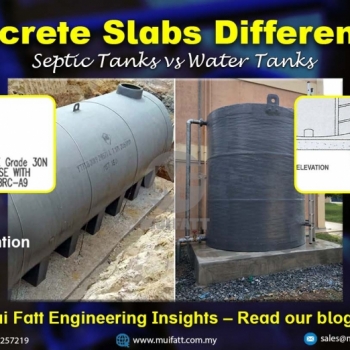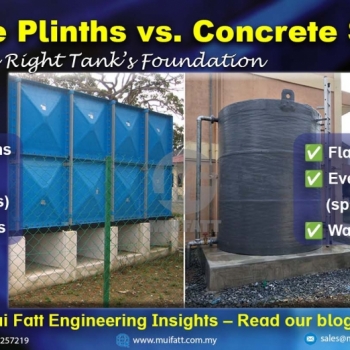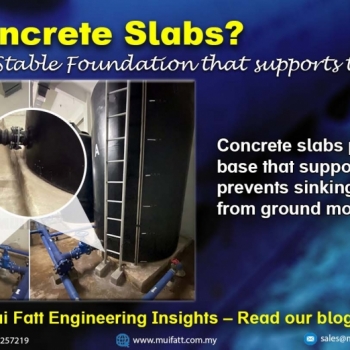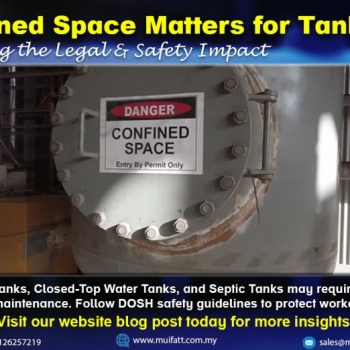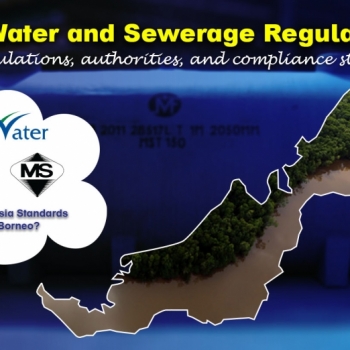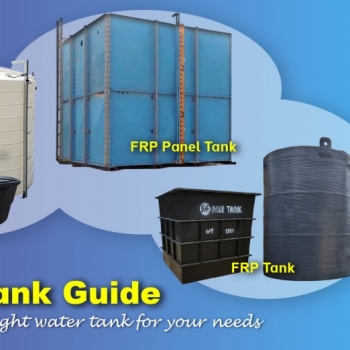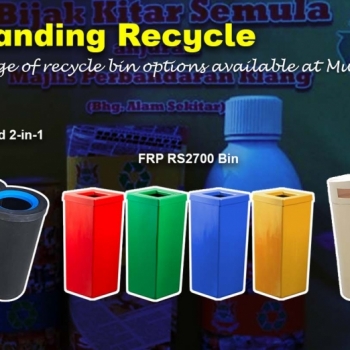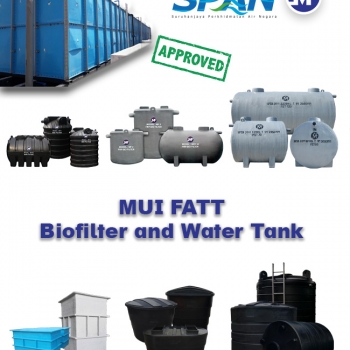Understand the key differences between concrete slabs used for water tanks and septic tanks. Learn about their functions, compliance standards, structural needs, and when to use each, so you can make the right decision for a safe and long-lasting installation.
Mui Fatt Engineering Insights - Panel Tank Concrete Plinth
04 Jun 2025
- Key Takeaways
- Why Are Concrete Plinths Required?
- Recommended Concrete Plinth Size for Water Tank Installation
- Role of Concrete Plinths in Maintenance
- The Purpose of C-Channels
- Do Other Material Tanks Require Plinths?
- Frequently Asked Questions (FAQs)
Key Takeaways
-
Concrete plinths provide load distribution, stability, and maintenance access.
-
C-channels enhance structural support, especially for larger tanks.
-
MS 1390:2010 mandates plinths for GRP sectional panel tanks in Malaysia.
-
Other tanks may also benefit from plinths for durability and functionality.
-
Always check local authority requirements and engineering specifications for compliance.
Sectional panel tanks, such as FRP (Fiberglass Reinforced Plastic) or SMC (Sheet Moulding Compound) tanks, are integral to industries like data centers, municipal water systems, and commercial developments. While the panels form the tank’s walls, their structural integrity heavily depends on a well-prepared foundation, most notably concrete plinths and C-channels.
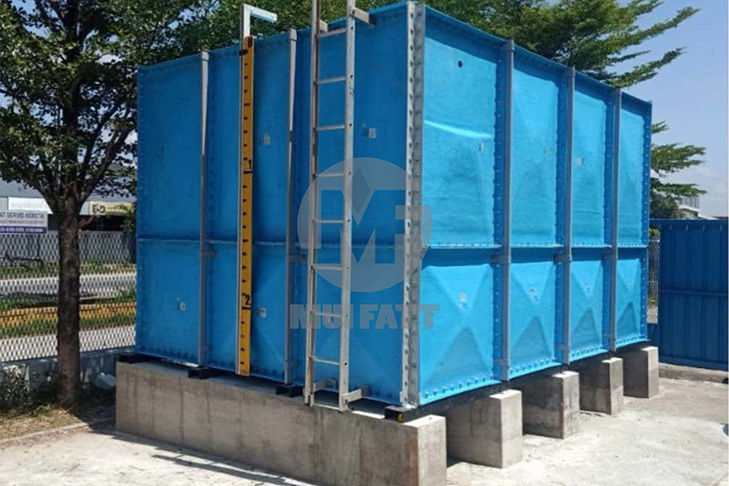
This article explains why these supports are essential, how they affect maintenance and longevity, and how standards in Malaysia define their use. Let’s dive into the engineering reasoning behind these crucial components.
Why Are Concrete Plinths Required?
Concrete plinths serve as the structural foundation of sectional panel tanks. Their purposes include:
-
Even Load Distribution: They spread the tank’s weight across the base, preventing uneven settlement that could lead to panel misalignment or cracking.
-
Elevation from Ground Level: Plinths raise the tank above ground, protecting it from soil moisture, corrosive agents, and pest intrusion.
-
Structural Stability: They ensure the tank remains level and secure, even under dynamic water load fluctuations.
According to MS 1390:2010, proper plinth installation is a mandatory standard for GRP sectional panel tanks in Malaysia.
Recommended Concrete Plinth Size for Water Tank Installation
When you install a water tank for cooling a data center, it's crucial to ensure that the concrete base beneath it is appropriate. The size of the concrete plinth required may differ based on the tank's dimensions and your specific needs. This base not only offers strong support for the tank but also aids in evenly distributing its weight. Adhering to the recommended guidelines for the concrete plinth size guarantees that your water tank is well-supported and operates effectively in cooling your data center.

Typical Concrete Plinths Support
The concrete plinths should have:
-
A width of 300mm and a height of at least 500mm.
-
Levelness to a maximum tolerance of 5mm along and among all the plinths.
The Steel Skid Base is designed according to tank height. C-channels or I-beams are used depending on the concrete plinth span and tank height.
|
Tank Height |
Concrete Plinth Span 1000mm |
|
1.0 m |
C-Channel 75 x 40 |
|
1.5 m |
C-Channel 75 x 40 |
|
2.0 m |
C-Channel 75 x 40 |
|
2.5 m |
C-Channel 150 x 75 |
|
3.0 m |
C-Channel 150 x 75 |
|
3.5 m |
C-Channel 150 x 75 |
|
4.0 m |
C-Channel 150 x 75 |
Role of Concrete Plinths in Maintenance
Concrete plinths don’t just provide support—they make the tank more maintainable. By elevating the structure, they:
-
Allow easy access beneath the tank for inspections, drain maintenance, and cleaning.
-
Minimize moisture contact at the base, reducing corrosion risk.
-
Provide space for under-panel pipework or fittings, essential for maintenance activities.
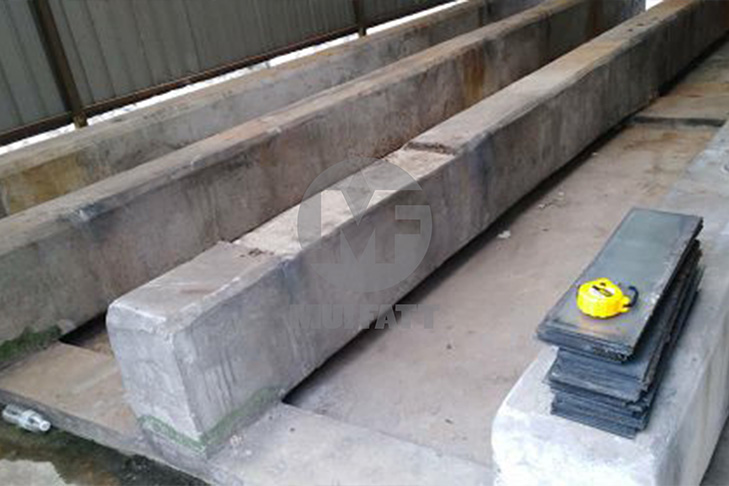
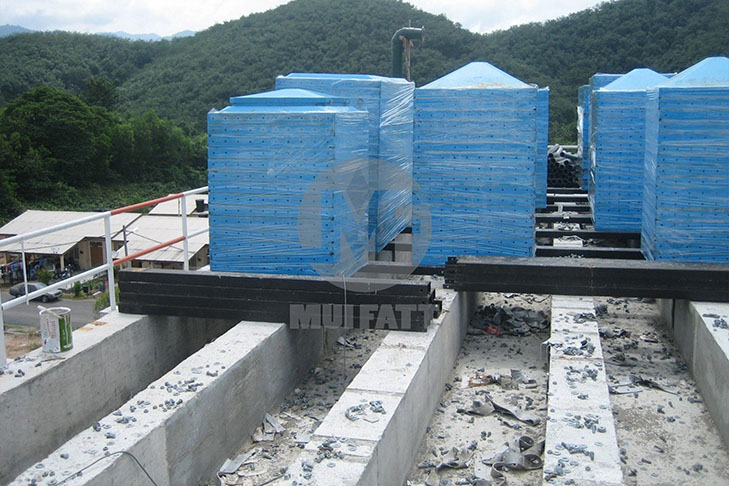
The Purpose of C-Channels
C-channels are steel reinforcement beams placed along the base of the tank, often bridging between plinths. They:
-
Help distribute the load evenly across the plinths, especially in larger tanks.
-
Add lateral stability to reduce stress on the panels from water movement or external forces.
-
Support the tank against dynamic loads, including thermal expansion and contraction.
While all standards might not explicitly require c-channels, they are best practice for ensuring tank safety and performance.
Do Other Material Tanks Require Plinths?
-
FRP and SMC sectional panel tanks: Almost always require concrete plinths as per standards like MS 1390:2010.
-
Steel tanks: May use alternative foundations (e.g., steel skids or reinforced pads) but often benefit from plinths for stability and maintenance.
-
Polyethylene (PE) or rotomolded tanks: Typically designed for direct placement on a level base but may incorporate plinths/slab for specific applications.
In summary, while not all tanks mandate plinths, they are highly recommended for safety, longevity, and ease of maintenance.
Concrete plinths and C-channels are more than just supports—they’re the foundation of long-lasting, high-performing sectional panel tanks. Whether it’s an FRP tank for a data center or a municipal installation, these elements ensure durability, ease of maintenance, and compliance with Malaysian standards.
Explore Our Successful FRP Sectional Water Tank Installation for Data Centers
Learn how concrete plinths differ from concrete slabs for other tank types - Mui Fatt Engineering Insights - Concrete Plinths vs Slabs
Frequently Asked Questions (FAQs)
Can panel tanks be installed without concrete plinths?
Not recommended. Concrete plinths ensure stability, alignment, and compliance with standards like MS 1390:2010.
How high should the concrete plinths be?
At least 500mm above ground, but the exact height depends on project specifications and site conditions.
How does the plinth design affect panel tank performance?
Proper design ensures load distribution, prevents misalignment, and enhances durability. Poor plinths can cause leaks or structural failure.
#Sectionalpaneltank #concreteplinth #cchannel #Malaysiawatertankstandards #paneltankmaintenance #watertankinstallation #paneltank
Disclaimer:-
The information provided on this website is for general informational purposes only and does not constitute legal advice. While we strive to ensure the accuracy and reliability of the information provided, we make no representations or warranties of any kind, express or implied, about the completeness, accuracy, reliability, suitability, or availability concerning the information contained herein. Any reliance you place on such information is therefore strictly at your own risk. This website may contain links to other third-party websites. Such links are only for the convenience of the reader, user, or browser; which we do not warrant, recommend, endorse, or assume liability for the contents of the third-party sites.
Keep in touch with us should you be keen on receiving timely updates from us
- Website - https://www.muifatt.com.my/home/
- Facebook - https://www.facebook.com/muifattmarketing
- Instagram - https://www.instagram.com/muifattmarketing/
- Google - https://goo.gl/maps/WxVY13gNcaRTS7Jp6
- Youtube - http://www.youtube.com/@MuiFattMarketing
- TikTok - https://www.tiktok.com/@muifattmarketing
- LinkedIn - https://www.linkedin.com/company/mui-fatt-marketing-sdn-bhd-
- Linktree - https://linktr.ee/muifattmarketing
- Shopee - https://www.shopee.com.my/muifattmarketing
- Lazada - https://www.lazada.com.my/shop/mui-fatt-marketing
Recent Blog
Mui Fatt Engineering Insights - Concrete Plinths vs Slabs
Compare concrete plinths and slabs to understand their roles in water, septic, and sectional tank installations. Learn key differences in design, application, and compliance.
Mui Fatt Engineering Insights - Tank Concrete Slab
Concrete slabs provide stability and safety for water and septic tanks. This blog explains why they are essential, whether they are mandatory, and how they impact installation and maintenance.
Why Confined Space Safety Regulations Matter in Tank Work
Working inside FRP or PE tanks, like panel tanks, septic tanks, or SSTS, may involve confined space hazards. Understand why compliance with DOSH regulations is essential for your project’s safety and success.
Essential Guidelines for Water & Septic Tanks in Borneo
Understand the regulations and guidelines for water and septic tanks in Borneo, plus compliance with SPAN, IWK, and SIRIM standards in Malaysia.
Essential Guide to Choosing the Right Water Tank for Your Needs
A step-by-step guide on water tank considerations, including material, size, application, and more. Learn how to pick the perfect tank for your needs.
Understanding Recycle Bins: Types, Uses, and Regulations in Malaysia
Learn the differences between recycle and recycling bins, the types of bins by color and material, and why they're essential for waste management in Malaysia. Discover our FRP and PE recycle bins for your needs.
Why SPAN-Approved Water and Septic Tanks Are Essential for Your Project
In this blog, we explore why using SPAN-approved water and septic tanks is critical for compliance, safety, and reliability in construction projects across Malaysia. Learn how SPAN certification ensures the quality of your tanks, and why it’s essential for maintaining water service standards under Act 655. Discover how various end-user products such as water tanks and septic tanks adhere to this legislation and the consequences of non-compliance, emphasizing the importance of strict adherence for safeguarding Malaysia's water resources and public well-being.



